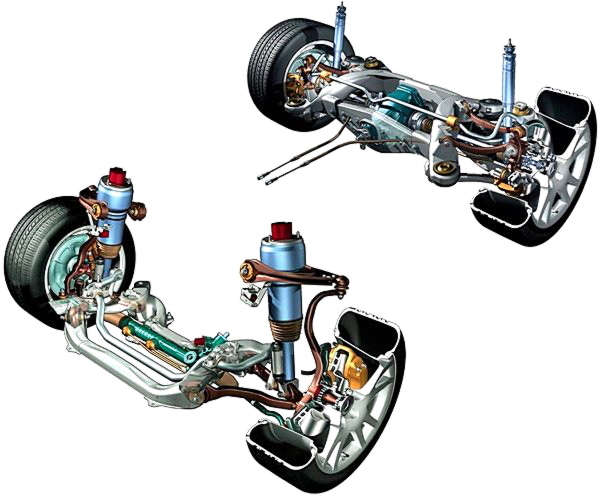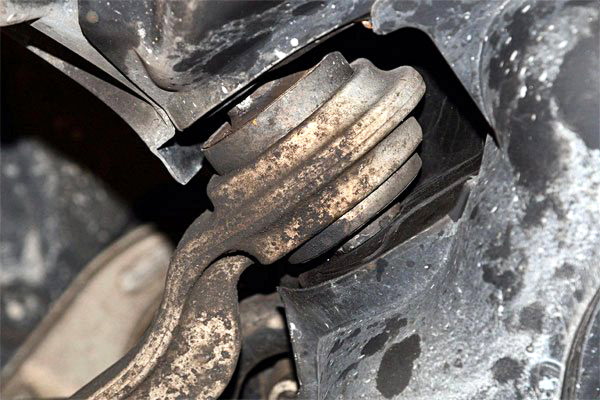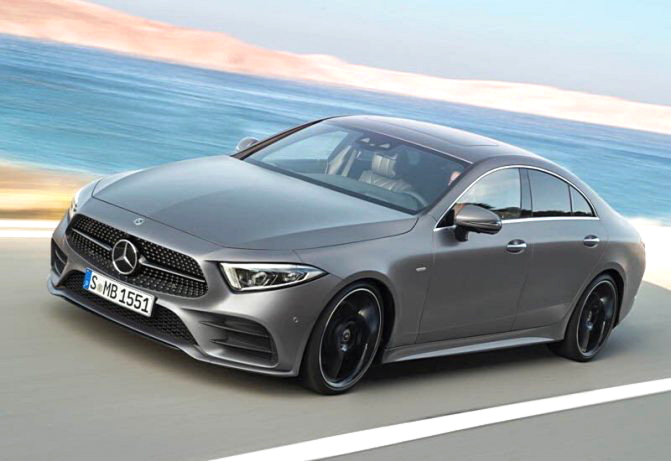Mercedes CLS review
Material content
Tune in for the best
Perhaps now we should start discussing the design of the new Mercedes CLS. But I won’t do it. At least in detail. The car turned out, frankly, ambiguous. If it looks very impressive from the front, then, let’s say, you need to get used to the rear view. To be honest, I haven’t been able to do it yet. And I’m not a fan of this type of body, which organically combines, in my opinion, the inexpressiveness of sedans with the impracticality of a coupe. Let’s talk about technology.
From a technical standpoint, the differences between the E-Class sedan and the CLS four-door coupe are vanishingly small. Their chassis is almost identical, as well, by the way, as the interior design. The main differences are in the suspension settings. As planned by the creators of the CLS, it should be noticeably more driving sedan and, at the same time, noticeably softer (in all respects) than the E-class coupe. A kind of intermediate option, when sportiness is not yet in antagonism with comfort. Let me tell you – it worked! During the official test drive, we were presented with cars only with optional air suspension. It simply exemplarily “swallows” even very large smooth bumps and transmits light shocks to the body only on small potholes with sharp edges.
The buildup and slight rolls in the corners are undoubtedly present, but do not harm the accuracy of control. Moreover, regardless of which suspension mode is selected. Having honestly experimented with “sport” and “comfort”, I switched the selector to the most uncompromising “sport +” mode, and … I forgot about it! I think that it will completely suit most drivers in any road conditions. The buildup is slightly reduced, but the machine does not become furiously rigid. What you need! There is, however, one feature that I might not have noticed if I had not decided to pull over to take pictures.
The Mercedes-Benz CLS of the current, third generation is built on the MRA modular rear-wheel drive platform and is almost completely unified in terms of chassis with the E-class sedan in the back of the W213. The similarity is so great that the models even have the same floor panels. Nevertheless, the Mercedes-Benz claim that the body of the new CLS is so reinforced through the use of high-strength steel parts that it allows the use of frameless doors characteristic of a coupe without the slightest loss of rigidity of the entire structure. To reduce the overall weight of the car, about 15% of the body parts are made of aluminum. Thanks to this, the CLS turned out to be only 40-50 kg heavier than the equivalent equipment of the E-class sedan.
The fact is that the ground clearance of the CLS is initially less than that of the platform E-class, and is approximately 120-125 mm (I, alas, do not know the exact figure). And when choosing a “sports” mode, the air suspension reduces it by another centimeter and a half. There is nothing left. A harmless roadside ramp or even a not-so-great Moscow-style speed bump can be a problem! Therefore, when overcoming such obstacles, it is desirable to raise the suspension to the upper position. Then, according to Mercedes-Benz engineers, the ground clearance will be about 140 mm. But as the speed increases, the machine will automatically lower again.
If you continue to compare the CLS with the E-class, you can see the difference in the steering settings. At speed here, the steering wheel is “clamped” much more strongly. Perhaps, with such a “sharp” steering – less than 2.5 turns from lock to lock – it will not be superfluous. Moreover, the selected chassis settings mode has practically no effect on the effort on the steering wheel.
Video
Chassis
A car with big wheels, especially when combined with a steel spring suspension, is quite stiff.
The optional Airmatic air suspension improves comfort levels, allows for variable ride height and generates higher maintenance costs. The most vulnerable elements: air struts and an air compressor (from 21,000 rubles for an analogue). The valve block of the pneumatic system can also fail (16,000 rubles).

The front air struts are only assembled with cylinders and are not sold separately (90,000 rubles for the original or 40-75 thousand rubles for an analogue). You can repair the rack for 15-20 thousand rubles. At the back, the situation is simpler – the shock absorber and the air spring are spaced apart. The rear cylinder can be purchased for 8,000 rubles, but the electronically controlled shock absorber is more expensive – 30-40 thousand rubles.
There are two levers for each front wheel. They are strong enough, but sooner or later, they require replacement (11-21 thousand rubles per lever). At times, components purchased on the market can be more durable than those installed at the factory.

Silent blocks of levers and stabilizer links are the most common problem according to TUV.
Wheel bearings reach 150-200 thousand km. They change as an assembly with a hub – 10-15 thousand rubles for an analogue plus 4,000 rubles for work.
Until 2006, the Mercedes CLS was equipped with SBC electro-hydraulic brakes. The system provided more efficient braking. However, it was programmed for a certain number of brakings, after which it blocked the brakes and required a service visit to replace the unit. The allotted service life made it possible to drive about 200-250 thousand km. The cost of a new block is about 80,000 rubles. You can restore the unit’s performance for 10-20 thousand rubles.
The steering rack can leak or knock after 180-240 thousand km. Buying a new part is not economically feasible – 300-350 thousand rubles. The restored rail is cheaper – 41-54 thousand rubles. About 25,000 rubles will be asked for the repair of the rail in a specialized service.
Complete set

The basic equipment of the MB Cls 63 AMG includes:
- Dry brake disc system
- Airbags
- Anti-collision device
- Tire pressure controller
- Full multimedia system with screen
- Navigation system
- Rear window heating device
- Device for automatic adjustment of optics
- Windshield wipers (they have a rain sensor installed)
- Heated all seats
- Automatic speech recognition
- Anti-lock braking system
- Vehicle dynamic stabilization system
- lane control device
As options for cls 53 amg manufacturers offer:
- air suspension
- Parking assist device
- Blind spot monitoring device
- Traffic Sign Recognition Assistant
- Ventilation in the front seats
- Possibility of trimming the interior in two colors of leather
- Adaptive lighting system
- Remote access system to the trunk lid
- Windscreen wipers
- Sun blinds
Safety
The first generation Mercedes CLS did not pass the EuroNCAP crash tests. Also, CLS was not tested by the experts of the Insurance Institute for Road Safety IIHS (the American analogue of the European Euro NCAP). The car is equipped with an ESP stability system, six airbags and a proprietary Presafe system. In the event of an accident, the latter regulates the degree of opening of the airbags, the tension of the seat belts and, if necessary, can independently close the windows and the sunroof to protect passengers.
Transmission
The engines were paired with a new 7-speed automatic transmission for that time. Only in AMG with 700 Newton meters they put the old 5-speed automatic.

7G-Tronic 722.9 requires regular maintenance – oil updates every 60,000 km. Otherwise, it will not last long, and repairs will be expensive (about 100,000 rubles). With proper care, the automatic transmission will last at least 250-300 thousand km. Sometimes the control board requires attention (65,000 rubles for the original or 20,000 rubles for repairs).
After 200-250 thousand km, the outboard bearing of the cardan shaft wears out (2-6 thousand rubles).
Six times half a liter
It’s worth talking about the engines of the new Mercedes CLS. By and large, they in themselves deserve a separate publication, but I will try not to go into unnecessary technical details. We can say that it is on this model that the family of new six-cylinder engines from Mercedes-Benz will debut. And this, attention, is in-line “six”, which has not been in the Mercedes scale for a long time. Moreover, both diesel and gasoline units are unified among themselves at the level of cylinder modules. By the way, they can be assembled as in the constructor – at least four, at least six in a row. In principle, three are possible, but this option does not suit German engineers because of its excessive vibration load.
The “fours” are still on the way, but for now, the youngest in this new range of engines is a 249-horsepower turbocharged diesel engine that produces 600 Nm of torque. It is placed on modifications with a 350d nameplate. Great motor. Quiet, torquey and completely devoid of characteristic diesel noise and vibration. It is no coincidence that in-line “sixes” have always been considered the most balanced engines in this sense! Here, only sportiness in his character is not much. Acceleration is undoubtedly good: 5.7 s. up to “hundreds” is very good, even by the standards of the class. But it doesn’t take your breath away. The car is so quiet, comfortable and stable that its real dynamics are simply not felt. On a good road, it seems that you have just started moving, and the speedometer needle is already approaching the 200 km / h mark. If you pull yourself together and reduce the speed to 120-130 km / h allowed on European roads, then you want to open the door, get out of the car and brush off a speck of dust from the windshield.
All versions of the new Mercedes-Benz CLS are equipped only with a nine-speed automatic transmission 9G-Tronic, no other options are provided. German engineers claim that such a gearbox is capable of transmitting up to 1000 Nm of torque and is noticeably superior in efficiency to its predecessor, the seven-speed 7G-Tronic. On most versions, the all-wheel drive transmission distributes engine thrust between the front and rear axles in a ratio of 45:55. Only the most powerful model in the range, the Mercedes-AMG CLS 53, stands apart. It uses an electronically controlled multi-plate clutch in its center differential, which engages the front wheels only as needed. That is why, such a car is somewhat different in handling in the limiting modes of motion. It is “sharper” in corners, can oversteer and is more demanding on the driver’s actions.
Leaving sporting ambitions aside, it seems that the best engine for the new CLS cannot be imagined. But only until you try the “400” diesel on the go (the next oldest version is the 400d). Here under the hood are the same six half-liter cylinders in a row, but with a biturbo. At the output, respectively, 340 forces and as much as 700 Nm. This allows you to reduce acceleration to 100 km / h by 0.7 s. Less than a second difference? It just doesn’t seem like much on paper. In reality, the feeling is quite different. Here, it really presses into the back of the seat and you have to strain your neck so as not to get the headrest on the back of your head. The only thing missing for a complete thrill is the appropriate soundtrack, with the roar of the engine and shooting at the mufflers, as was the case on the old, still atmospheric Mercedes from AMG. But the time of such machines, alas, has passed. The future has come, and the gasoline Mercedes CLS 450 eloquently proves that it is already here.